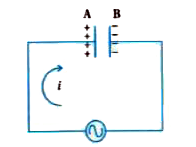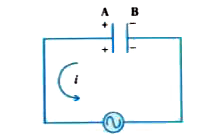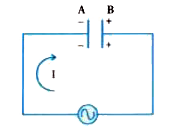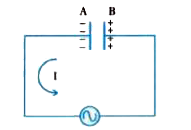Text Solution
Verified by Experts
|
Topper's Solved these Questions
ALTERNATING CURRENTS
KUMAR PRAKASHAN|Exercise SECTION B NUMERICALS (TEXTUAL ILLUSTRATIONS)|33 VideosView PlaylistALTERNATING CURRENTS
KUMAR PRAKASHAN|Exercise SECTION B NUMERICALS ( TEXTUAL EXERCISE )|13 VideosView PlaylistALTERNATING CURRENTS
KUMAR PRAKASHAN|Exercise SECTION-D MCQs (COMPETITIVE EXAMS)|64 VideosView PlaylistATOMS
KUMAR PRAKASHAN|Exercise Section-D -MCQs asked in GUJCET / Board Exam|34 VideosView Playlist
Similar Questions
Explore conceptually related problems
Knowledge Check
Similar Questions
Explore conceptually related problems
KUMAR PRAKASHAN-ALTERNATING CURRENTS -SECTION-A (QUESTIONS-ANSWERS)
- Discuss the power in AC circuit with only an inductor.
07:02
|
Play - Explain AC circuit with only capacitor.
04:20
|
Play - Discuss power in AC circuit containing only capacitor.
03:27
|
Playing Now - Obtain the relation of voltage applied to a series LCR circuit.
03:17
|
Play - Obtain the relation of phase between instantaneous current and voltage...
03:17
|
Play - Draw phasor diagram for X(C ) gt X(L) and X(C ) lt X(L) and give the d...
03:15
|
Play - Obtain an anaalytical solution for the relation of phase between insta...
05:52
|
Play - What is resonance? Give its example.
04:45
|
Play - Explain resonance for an L-C-R series circuit and write its uses. In w...
06:50
|
Play - Obtain an equation for sharpness of resonance in an L-C-R series AC ci...
10:05
|
Play - Obtain the equation of the bandwidth for an L-C-R series AC circuit an...
07:14
|
Play - What is sharpness of resonance ? Derive equation of Q-factor
03:00
|
Play - If L= 1.00 mH, C = 1.00nF, then find the resonant frequency.
02:22
|
Play - Define the power for AC circuit. Obtain an equation of average power f...
04:14
|
Play - Write an equation of average power for L-C-R series AC circuit and dis...
02:10
|
Play - What is meant by LC circuit? What are LC oscillations ?
03:43
|
Play - Obtain the differential equation for a LC circuit.
01:38
|
Play - Solve the differential equation of L-C circuit and obtain the expressi...
02:30
|
Play - Explain how LC oscillations takes place in the circuit.
03:10
|
Play - Compare the oscillations in an LC circuit are analogous to the oscilla...
04:31
|
Play




